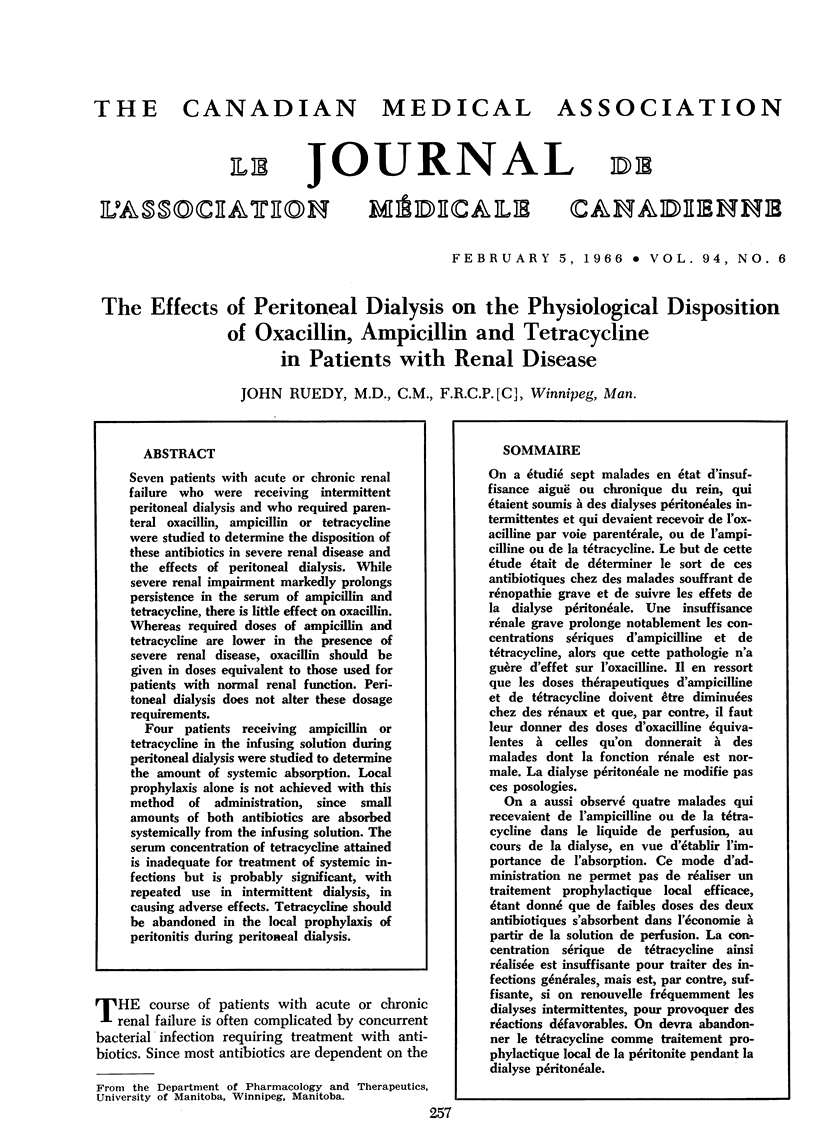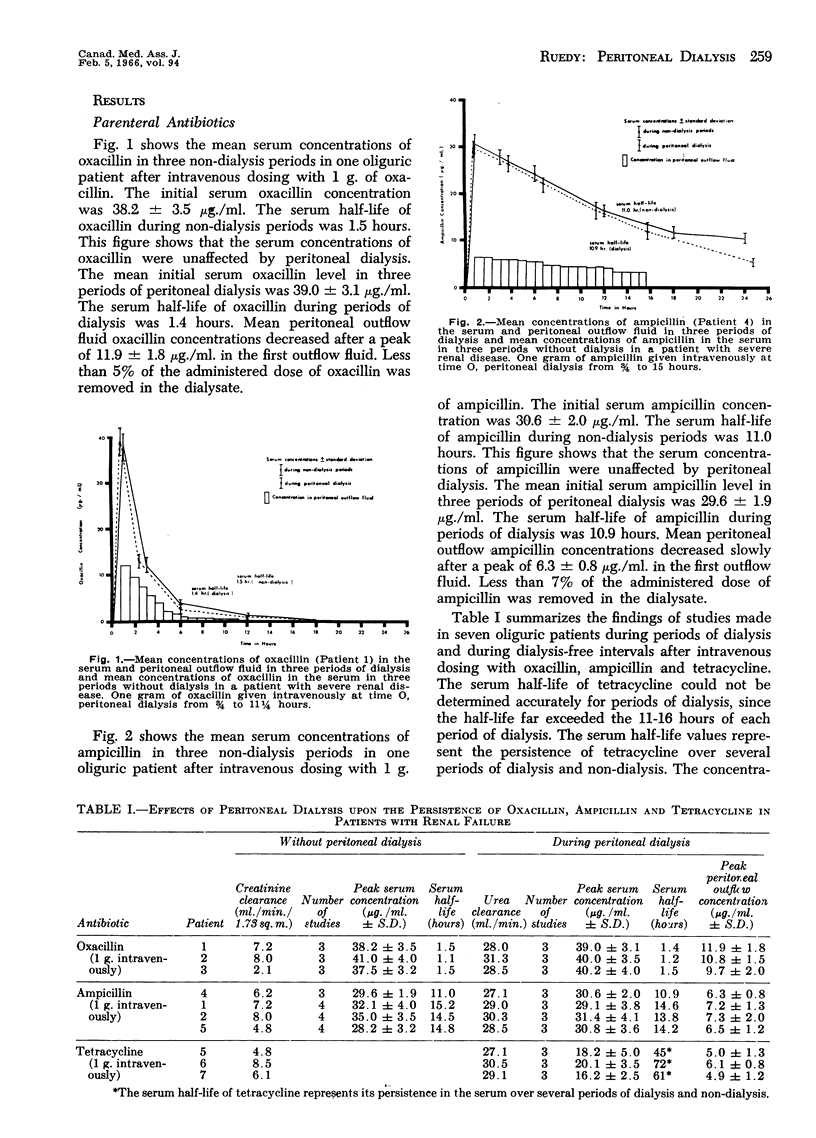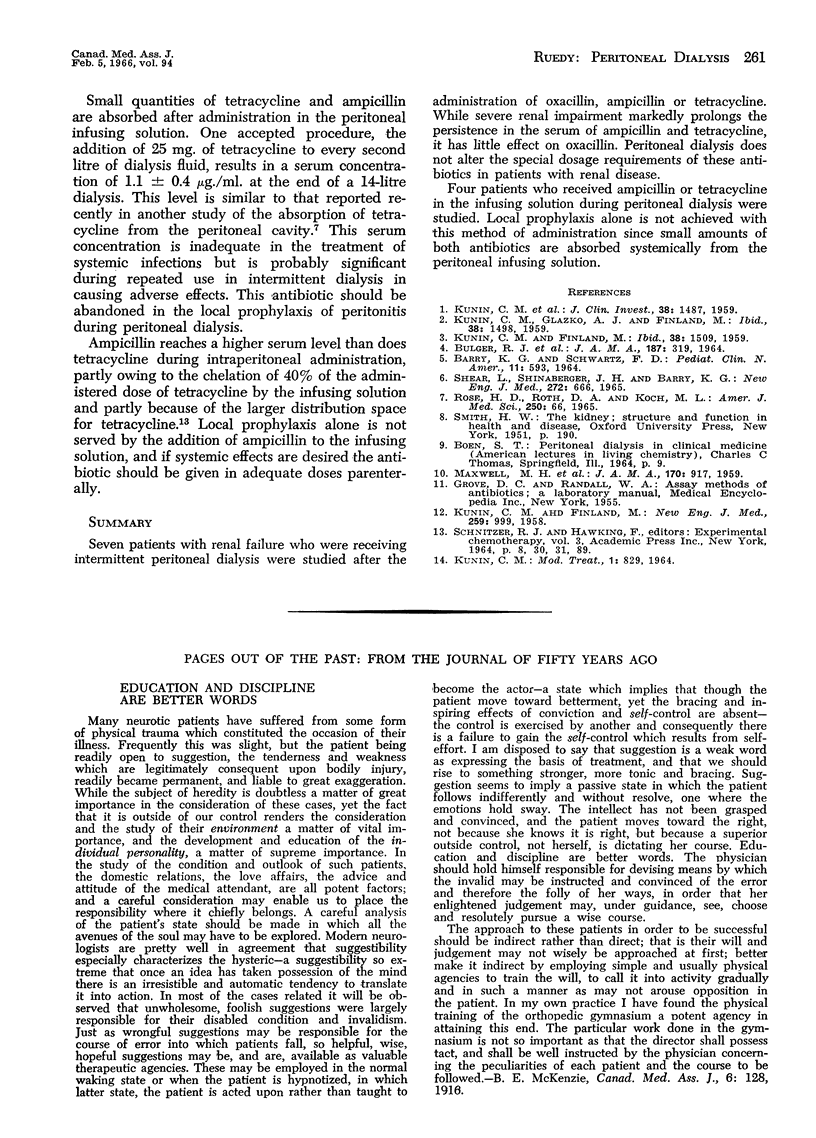Abstract
Seven patients with acute or chronic renal failure who were receiving intermittent peritoneal dialysis and who required parenteral oxacillin, ampicillin or tetracycline were studied to determine the disposition of these antibiotics in severe renal disease and the effects of peritoneal dialysis. While severe renal impairment markedly prolongs persistence in the serum of ampicillin and tetracycline, there is little effect on oxacillin. Whereas required doses of ampicillin and tetracycline are lower in the presence of severe renal disease, oxacillin should be given in doses equivalent to those used for patients with normal renal function. Peritoneal dialysis does not alter these dosage requirements.
Four patients receiving ampicillin or tetracycline in the infusing solution during peritoneal dialysis were studied to determine the amount of systemic absorption. Local prophylaxis alone is not achieved with this method of administration, since small amounts of both antibiotics are absorbed systemically from the infusing solution. The serum concentration of tetracycline attained is inadequate for treatment of systemic infections but is probably significant, with repeated use in intermittent dialysis, in causing adverse effects. Tetracycline should be abandoned in the local prophylaxis of peritonitis during peritoneal dialysis.
Full text
PDF




Selected References
These references are in PubMed. This may not be the complete list of references from this article.
- BARRY K. G., SCHWARTZ F. D. PERITONEAL DIALYSIS. CURRENT STATUS AND FUTURE APPLICATIONS. Pediatr Clin North Am. 1964 Aug;11:593–609. doi: 10.1016/s0031-3955(16)31585-1. [DOI] [PubMed] [Google Scholar]
- KUNIN C. M., FINLAND M. Demethylchlortetracycline; a new tetracycline antibiotic that yields greater and more sustained antibacterial activity. N Engl J Med. 1958 Nov 20;259(21):999–1005. doi: 10.1056/NEJM195811202592102. [DOI] [PubMed] [Google Scholar]
- KUNIN C. M., FINLAND M. Persistence of antibiotics in blood of patients with acute renal failure. III. Penicillin, streptomycin, erythromycin and kanamycin. J Clin Invest. 1959 Sep;38:1509–1519. doi: 10.1172/JCI103929. [DOI] [PMC free article] [PubMed] [Google Scholar]
- KUNIN C. M., GLAZKO A. J., FINLAND M. Persistence of antibiotics in blood of patients with acute renal failure. II. Chloramphenicol and its metabolic products in the blood of patients with severe renal disease or hepatic cirrhosis. J Clin Invest. 1959 Sep;38:1498–1508. doi: 10.1172/JCI103928. [DOI] [PMC free article] [PubMed] [Google Scholar]
- KUNIN C. M., REES S. B., MERRILL J. P., FINLAND M. Persistence of antibiotics in blood of patients with acute renal failure. I. Tetracycline and chlortetracycline. J Clin Invest. 1959 Sep;38:1487–1497. doi: 10.1172/JCI103927. [DOI] [PMC free article] [PubMed] [Google Scholar]
- SHEAR L., SHINABERGER J. H., BARRY K. G. PERITONEAL TRANSPORT OF ANTIBIOTICS IN MAN. N Engl J Med. 1965 Apr 1;272:666–669. doi: 10.1056/NEJM196504012721304. [DOI] [PubMed] [Google Scholar]


